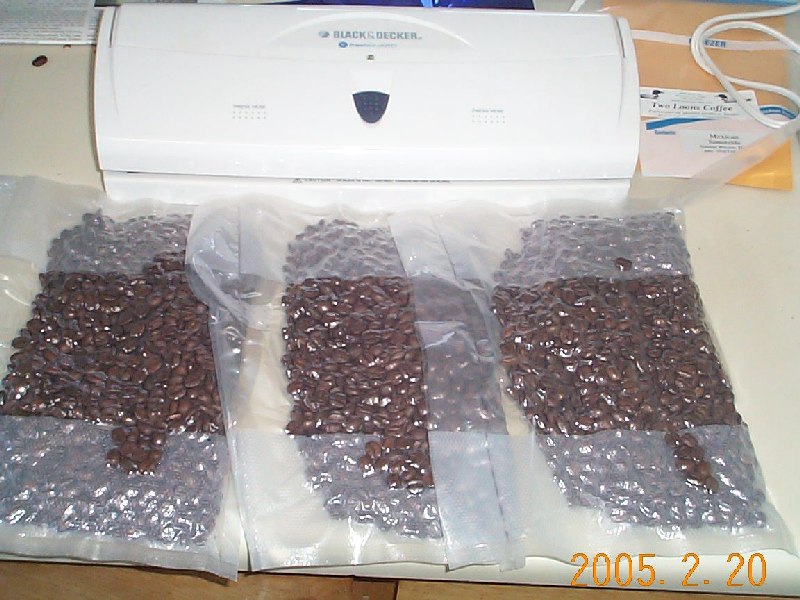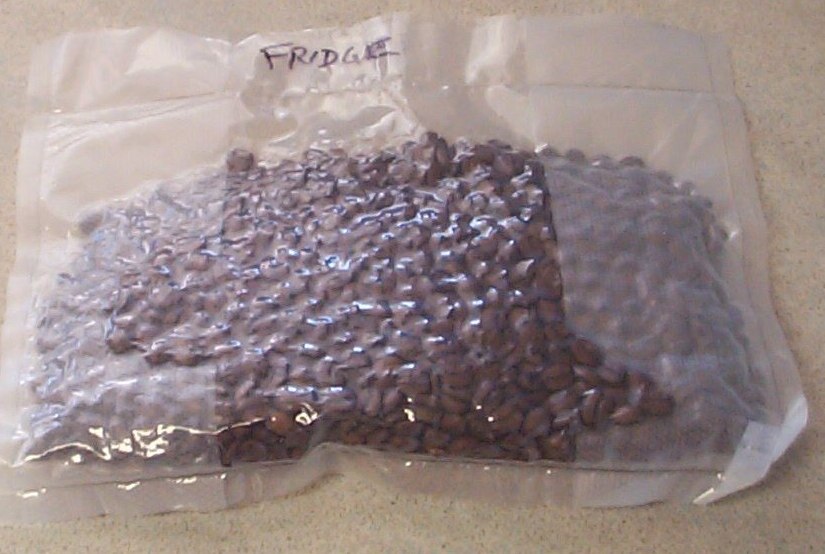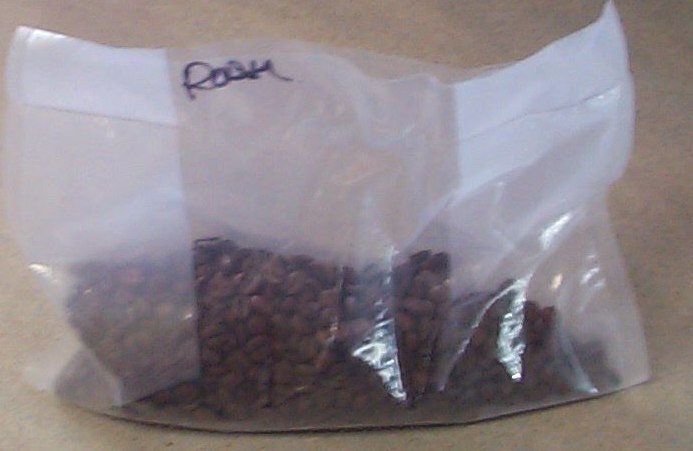![[twoloons]](../images/twoloons_reflect.jpg)
Storing Roasted Coffee: an experiment in agingWeb site authors and usenet participants all seem to have their own theories when it comes to best storage practices for roasted coffee. I think the diversity comes not only from misinformation "out there" but also from the different assumptions people make when they put those storage theories into practice. What is the "best" way to store coffee? What's the worst? These are impossible to answer without qualifiers, but maybe we can shed a small amount of light on the question with a simple experiment. There's no absolute definition for "stale" except "not fresh." However, there are two stages of the staling process that we can look at. The first is the continuation of chemical changes initiated in roasting. These reactions result in a very visible indicator; offgassing of carbon dioxide. The fact that freshly roasted coffee gives off carbon dioxide is undeniable, so we can use the progression of that process as an indicator of freshness. At room temperature, 50-75% of the total CO2 is given off during the first 48 hours after roasting. (This of course varies with the degree of roast and storage temperature.) The remainder makes its way out over the next week or two... again, depending the aforementioned variables. I'd like to do this experiment properly some day, being able to measure exact amounts of CO2 produced, but for now I figure visual measurements can at least add some fuzzy datapoints. To that end, I roasted up a small batch of Brasil Serra Negra beans, divided it into thirds, and vacuum sealed into freezer storage bags within a minute or two after dropping from the cooling bin. I put one package in our 37°F refrigerator, another in the -7°F freezer, and the third in the "room temperature" kitchen, which ranged anywhere from 65°F to 72°F over this period. Note, this is just a cheapie household Hotpoint side-by-side refrigerator/freezer with the thermostats for both refrigerator and freezer set at 5 on a scale of 0 to 9. There are those who have said that only "industrial" freezers would do for proper coffee storage but I have to disagree. I have no idea what ours would get down to on a setting of 9, but since we already have to microwave our ice cream, I never did get around to finding out... and now that we're moving again, I probably won't. Point is that you don't need an expensive industrial type freezer to get down close to "stop it in its tracks" temps. |

|
After one day the frozen brick was still a brick. The refrigerator brick was still
solid, but not as hard as day 1, and the room temp package was already starting to
blow up some. |


| An angle for better comparison on day 3: |

| And then down the road at day 19: |

|
And then way down the road at day 41 when the room temperature beans are
showing tiny traces of oil on about 95% of the beans, while the refrigerated beans
are just beginning to show traces on about 5% of the beans. Of course the frozen
beans are still dry as a bone.: |




Two Loons Coffee, 2005 © all rights reserved